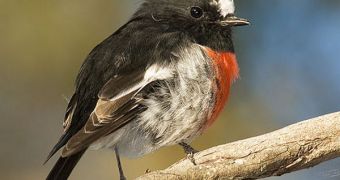The debate as to how many species live on our planet has been ongoing for centuries, and scientists have thus far failed to come to an agreement on this issue. Most commonly, experts say that the number of creature types ranges in the tens of millions, but a new investigation by Australian researchers at the University of Melbourne drastically cuts back on those numbers. The scientists say that the overall number of species is most likely below ten million. The data are based on a new model of estimating the total number of tropical insect species. Insects make up the largest portion of all living things.
The research, which has major implications for ongoing and future conservation efforts, was aimed squarely at these insect subgroups because they are notoriously hard to study. Coincidentally, tropical insects are also the largest subgroup in this general population. According to Dr Andrew Hamilton, the UM School of Land and Environment professor who led the new study, the work was carried out because he found it awkward that astronomers, for example, were more sure of the number of stars in the Milky Way than biologists were of how many species actually share the world with us.
“Our understanding of species numbers has been clouded by one group of organisms, tropical arthropods, which include insects, spiders, mites and similar organisms. Estimates for this group have ranged from a few million up to 100 million,” Hamilton explains. For this investigation, the UM team used financial risk estimate tools, which include probability modeling techniques. These were then applied to numerous datasets, obtained from a large number of previous scientific investigations on the matter. The end result of their investigation shows that the most likely number of tropical insect species ranges somewhere between 2 and 7 million. The group believes that the best estimate is 3.7 million species, PhysOrg reports.
“Our study is significant in this the International Year of Biodiversity, giving us a more realistic starting point for estimating extinction rates – a profound hurdle in conservation biology. Extinction rates are typically estimated through knowing the area of habitat that has been lost, but to know how many species have been lost, we need to know how many were present in the first place. Obviously, if we are starting with less species, we may be worse off than we thought, and also be reducing the complexity of ecosystems even faster. The findings also mean that in spite of 250 years of taxonomic research, around 70% of arthropods await description,” the expert says.
“Many scientists have redone the calculations using different values and arrived at wildly different answers. Our work reran the same calculations, which use various inputs, such as the number of beetle species in the canopy of a typical rainforest tree, but accounted for uncertainty relating to these inputs and, therefore, uncertainty in the final estimation how many species there are,” Hamilton adds. The total number of species on Earth may be around 5.5 million, he adds, when adding to the mix 50,000 species of birds, mammals, amphibians and reptiles, some 400,000 species of plants, as well as 1.3 million species of microorganisms.

 14 DAY TRIAL //
14 DAY TRIAL //